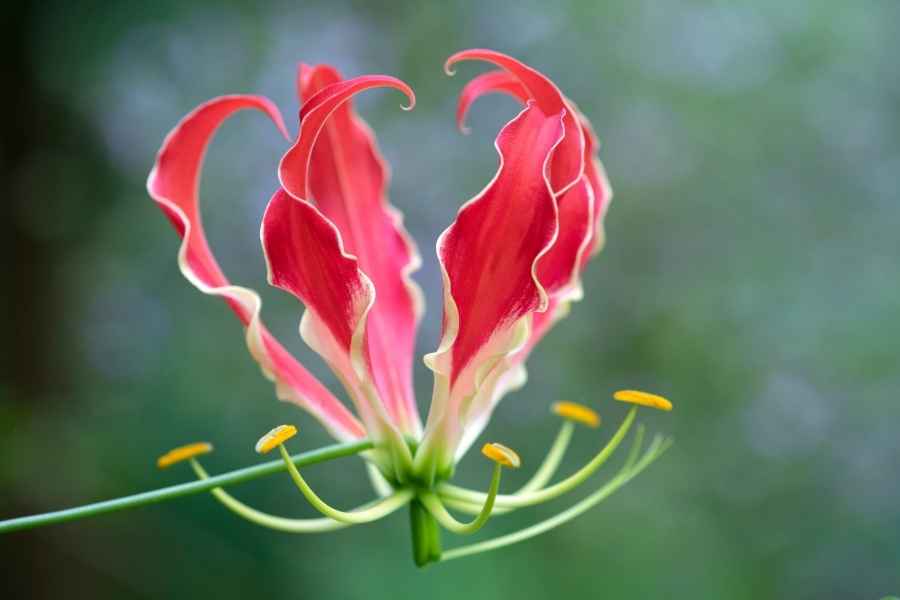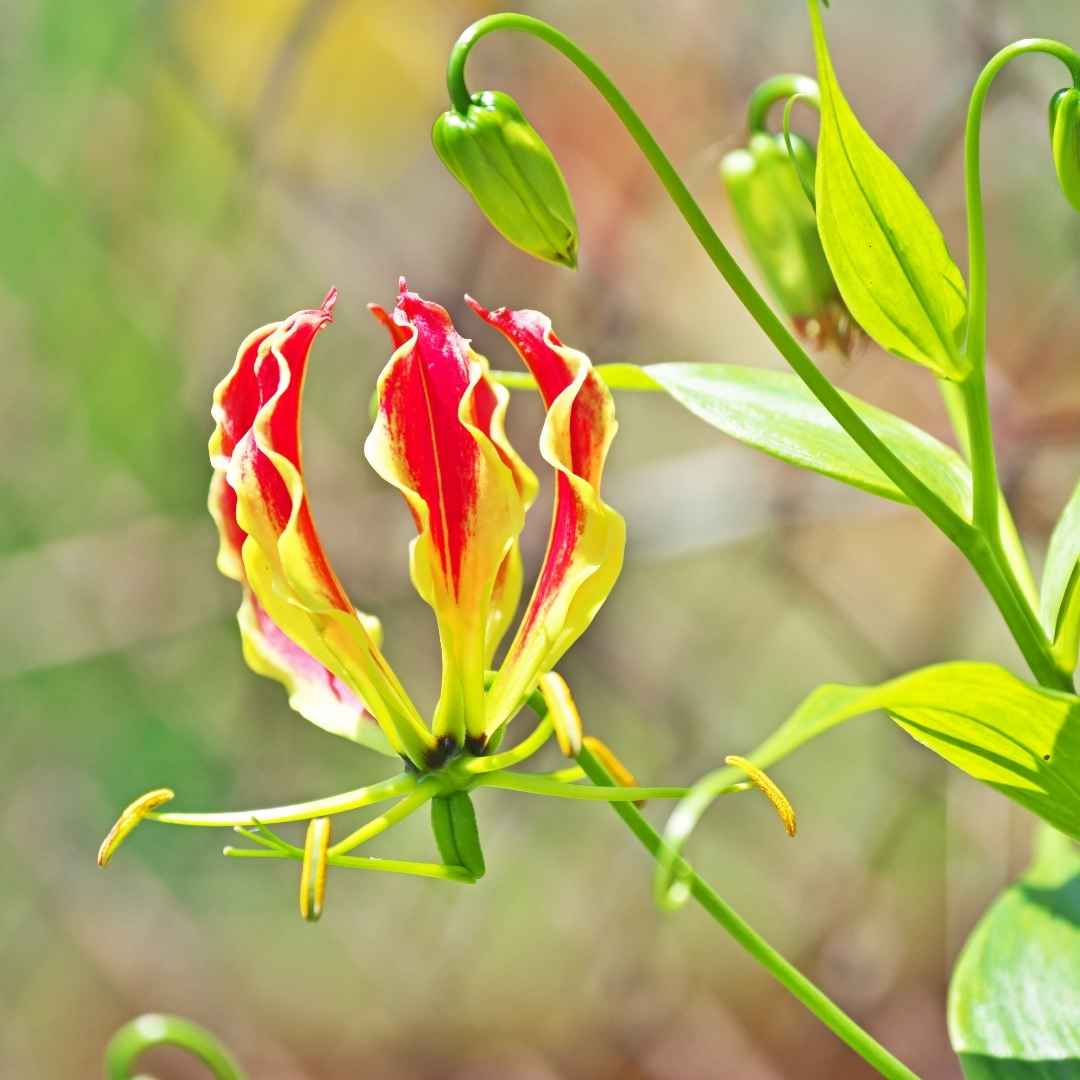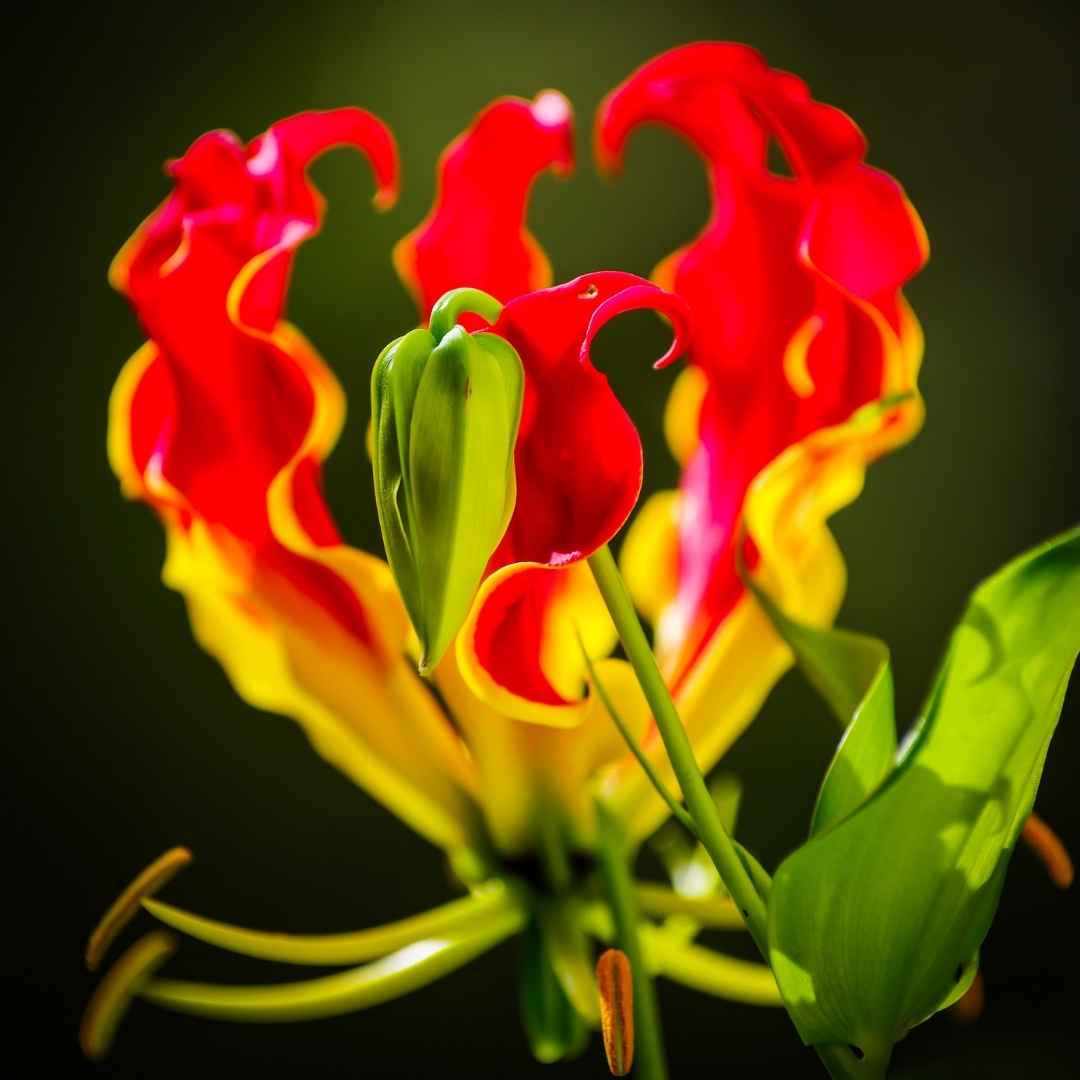How to Grow and Care for Gloriosa Lily

Hello, how are you today? Welcome to our blog About Gardening. We hope you are very well and looking forward to a new post or Gardening Tutorial.
Today we want to share with you a special post:
How to Grow Gloriosa Lily
[adinserter block="11"]
The glorious lily is not a true lily, but it does have lily-like flowers and this is how it got its common name.
This plant belongs to the same family as the autumn crocuses, the Colchicaceae, but it doesn't even look like a crocus: it is a tall, slender vine that reaches 2.5 meters in height.
In spring, the glorious lily separates the tall stems from its thick tuberous roots.
The stems grow fast and from midsummer to fall they develop flowers that can bend or open upwards. After flowering, the stems die again.
Two words of warning about this plant. First, the tubers are spreading vigorously and in Australia and several Pacific islands, the glorious lily is classified as an invader.
Although it has not been classified as an invader by any US state, it has escaped cultivation in several regions.
Due to their highly invasive potential, we recommend growing beautiful lilies only in pots.
Furthermore, all parts of the plant are toxic to humans and pets.
| Botanical Name | Gloriosa superba |
| Common Name | Gloriosa lily, glory lily, fire lily, flame lily, climbing lily, creeping lily, cat’s claw, tiger’s claw |
| Plant Type | Perennial |
| Mature Size | Six to eight feet height, one to three feet width |
| Sun Exposure | Full sun, partial shade |
| Soil Type | Sandy, loamy |
| Soil pH | 5.8 to 6.5 |
| Bloom Time | Mid-summer to fall |
| Flower Color | Red, orange, yellow, pink |
| Hardiness Zones | 8-12, USA |
| Native Area | Tropical and sub-Saharan Africa, Indian subcontinent, southern China and southeast tropical Asia |
| Toxicity | Toxic to humans and animals |
Glorious Lilies care
Native to the tropical and subtropical regions of Africa and Asia, Gloriosa Lily is not frost resistant and can only be grown as a perennial in a warm climate. In a cold climate zone, it can still be grown as a summer year.
It is enough to dig up the tubers in the fall, before the first frost, and overwinter at home, and then replant them in the spring.
When the stems start to grow in spring, hold the support in place, like lightweight wire mesh, so the leaf tendrils have something to hold onto.

Light
The glorious lily grows in full sun to partial shade. Especially in hot, dry climates, it works best with some protection from the afternoon sun, like dotted shade from larger plants nearby.
[adinserter block="8"]
Soil
The soil must be rich and provide excellent drainage. The sand or clay types work best.
To enrich the soil, correct with organic matter.
Gloriosa Lily grows well in neutral to slightly acidic soils.
Water
The glorious lily needs uniform humidity throughout the growing season, spring through fall.
In the absence of rain, water regularly, ensuring good drainage, so that the plant is never in wet, soggy soil.
Temperature and Humidity
The Gloriosa Lily grows at altitudes of up to 2,000 feet, where daytime temperatures are moderate, around 70 degrees, and nights are cold, around 60 degrees F.
It does not do well in hot, arid climates.
In high humidity conditions, on the other hand, the glorious lily is in its element; think of the monsoon season in its natural habitat.
[adinserter block="8"]
Fertilizer
Fertilize the glorious lily once a month with a diluted complete fertilizer during the growing season, less often when the soil is very rich.
Too much fertilizer does not necessarily lead to better flowering and, on the contrary, can stimulate foliage growth.
Propagation of the Glorious Lily
Giglio Gloriosa is grown from tubers, which remain dormant during the winter.
Store tubers in a cool, dry, frost-free place until you are ready to plant in the spring when the risk of frost has passed.
Growth will initially be slow and will increase as the weather warms.
The glorious lily can be divided every three years at most.
Is Glorious Lily Toxic?
All parts of the glorious lily contain high levels of the toxic alkaloid colchicine, with a higher concentration in the tubers.
Ingestion of any part of the plant can be fatal to humans and animals, and skin contact with the plant, especially tubers, can cause skin rashes. As a precaution, when handling the plant, be sure to wear gloves.
[adinserter block="8"]
Varieties of Gloriosa Lily
There are several cultivars of glorious lilies with different colored flowers ranging from yellow to gold, orange, red, or pink. One of the most popular cultivars is "Rothschildiana" with bright red flowers and yellow margins.

Glorious Lily Growing in Containers.
Growing glorious lilies in containers is a good idea for a number of reasons.
First of all, this is the only way to grow it in a cold climate with sub-zero winters. Second, it avoids the risk of it spreading uncontrollably and becoming invasive.
Finally, the tubers are very fragile and break easily, so the less they are handled the better (and due to their toxicity, handling requires special care).
Therefore, the best option is to plant the tubers in containers where you leave them all year round.
In containers, they will need more frequent watering and a sunny patio is often too hot for the plant.
Alternatively, you can bury the containers in garden soil and dig them up again in the fall, before the first frost.
Common Pests/Diseases
Glorious lily can be affected by aphids, anthracnose, cucumber mosaic virus, and other viruses, as well as root rot.
Leaves that turn dry and pale are not a disease, but a sign of excessive sun exposure.
Enjoy This Video Tutorial About Growing Gloriosa Lily
Source: johnny A
Don’t forget to Subscribe to our Newsletter to receive amazing tips and tricks about Gardening and the FREE Ebook Green Living Strategies!
[adinserter block="11"]
Did you find this post Useful or Inspiring? Save THIS PIN to your GARDENING Board on Pinterest! 😊

[adinserter block="8"]
Once again, thank you for visiting our website!
We hope you've enjoyed exploring the content we've created for you.
Give yourself the chance to learn, get inspired, and have even more fun, keep browsing...

You may also like 👇🏼👇🏼